Thank you for all the kind words and inquiries regarding our outdoor playset. We had a blast building it, but most importantly, our kids and their friends are having an even better time using it!
My intention when I originally wrote the post was to prove that building a playset could cost a lot less than buying one. Based on a number of requests from that post, however, we culled frequently asked questions and calculated lumber to provide a resource for other DIYers out there.
Please note this is a guide based on how we built our playset (and the size of our trailer, backyard, etc.) — please calculate and adjust accordingly. This listing also includes the additions we made to the original post.
Tools & Materials List
- (7) pressure-treated 4″ x 4″ x 10′
- (3) pressure-treated 2″ x 10″ x 8′
- (1) pressure-treated 4″ x 6″ x 12′
- (20) pressure treated 2″ x 4″ x 10′
- (25) pressure-treated 1″ x 6″ x 10′ deck boards
- (26) pressure treated 5/8″ x 5 1/2″ x 6′ fence pickets
- (1) 1/2″ CDX plywood
- (4) bags concrete mix
- (1) A-frame swing bracket or EZ frame bracket (plus mounting hardware)
- (4) heavy-duty swing hangers (plus mounting hardware)
- (1) Swing-N-Slide alpine wave slide
- (2) Swing-N-Slide extra-duty swing seats
- (2) Swing-N-Slide climbing rocks
- (1) Swing-N-Slide pirate ship wheel
- exterior wood screws, various sizes
- 2″ 6d ring shank nails / hammer
- miter saw / table saw / jig saw
- cordless drill with bits
- posthole digger / shovel
- wheelbarrow
- level
Framing & Base
The base and the top deck are 6 feet by 5 feet between the posts. The posts are 10 feet tall with about 2 feet cemented into the ground, so there is about 8 feet above ground. We used pressure-treated 4x4s for the posts and pressure-treated 2x4s for the frame. The center cross bars are set upon a cement footer and everything is held in place with exterior wood screws.
Even though we spread a weed barrier, a persistent plant or two still manages its way between the slats. It could be a lot worse though, so I wouldn’t skip the step. We also later filled the space between the ground and deck with landscaping rocks in an effort to discourage field mice from burrowing in there and driving our dog bonkers.
Tip from the Chief: Make sure the 4x4s are level, square and plumb. Cement one at a time, bracing it into place and re-checking it periodically while the cement dries.
Laying the foundation was time-consuming, but imperative to constructing two identical decks and a long-standing playset that is square, sound and safe.
For the flooring on both decks, we used pressure-treated 1×6 deck boards cut to size with a miter saw at a 45-degree angle. Spaces were cut with a jig saw to accommodate the posts. The boards are held in place with exterior wood screws, which made it easy to later take up, fill the space with rocks and replace the boards.
Tip from the Chief: Don’t throw away those scrap pieces of wood! Put them to work in various ways throughout the playset such as stair cleats, gussets, stud caps (above), etc.
The Upper Deck & Roof
The top deck starts at 5 feet solely to coincide with the slide and is constructed in the same manner as the base. The top railing is made from 2x4s, and the other horizontal rails are made from the same 2x4s ripped in half. We placed additional vertical 2x4s to properly mount the railings all the way around the playset.
The arches were cut with a jigsaw from 2×10 boards as a decorative detail along three sides. The fourth side, along the stairway, is a straight 2×4 board.
The roof was a lesson in geometry — rise over run and all that. (Wow, we really do use that stuff again!)
It is 6 feet high in the center and has some overhang beyond the platform. The Chief used a computer-aided design (CAD) program to calculate the necessary dimensions for building the roof, such as angles for cutting the birdsmouth and the lengths of the boards. The truss is built with pressure-treated 2x4s, while the roof was formed by overlapping fence pickets (dog ears removed) with ring shank nails. Pressure-treated deck boards cap off the front and back fascia for a finished look.
The Swings
Pressure-treated 4x4s form the A-frame for the swings. They are cemented into the ground about 2 feet and set at a 15-degree angle each. The swings hang from a pressure-treated 4″x 6″x 12′ beam at about 8 feet above the ground. The swings sit about 10 feet from the fence when still, which provides plenty of clearance for swinging and/or having someone behind pushing.
The Chief made the green metal brackets for our set, but similar ones are referenced in the Materials List. The Chief also made the hardware for our swings.
We originally used 3/8″ eyebolts to get them up and swinging, but later upgraded to these stainless steel beauties. They are quiet, smooth and rust-proof. Similar swing hangers are referenced in the Materials List as well.
Outdoor Chalkboard
We used three coats of Valspar chalkboard paint over 1/2″ CDX plywood to create an outdoor chalkboard in the space under the stairs. We framed it with 2x4s ripped in half and painted on the alphabet with outdoor acrylic paint. You can find the chalkboard and alphabet how-to here.
Rock Wall & Stairs
We used pressure-treated 2x4s and deck wood for consistency on the rock wall and stairs.
The rock wall consists of 12 deck boards attached to two 2x4s that are concreted in the ground. We eyeballed the angle of the wall based on our preference for a challenging, but not too steep, rock wall. The last step at the top is a deck board ripped in half to bring the wall in line with the upper deck. The top of the 2x4s are also attached to the upper deck with exterior wood screws from inside the platform.
The stairs were another lesson in geometry. The Chief based his calculations on the size of our then-4-year-old son and made the stairway 16″ wide. He also used a full board for each stair step, spacing the steps evenly along the 60″ incline. For our playset, the math worked out to seven steps with about 6.5″ between each step.
To further support the stairs, we added two triangle cleats per stair, cut from leftover deck boards. There is a landing at the top and bottom that are attachments to the decks. The upper landing is supported by a 4×4 ripped in half and cemented into the ground.
Overall
Our playset is approximately 15 feet wide from A-frame to deck and takes up a small corner of our backyard. The first stage cost about $650 for all the pressure-treated wood, hardware, concrete, weed barrier and accessories — the slide, swings, rocks and wheel. A lot of the materials for the upgrades we already had on-hand, so the add-ons cost about another $150 for a grand total of $800. That is still way cheaper than a ready-made swing set and even includes some landscaping!
Tip from V.: Save a bundle by using credit card reward points/dollars to purchase the playset accessories. Or ask grandparents to buy some as birthday gifts.
Even though we used all pressure-treated wood, there are black spots developing on the wood throughout the playset. It’s a surface issue rather than a structural one and can be easily remedied with a good cleaning. I am happy to report our playset is still standing strong even after a year of torrential downpours, hurricane winds and everyday abuses of rambunctious children. Most of all, it continues to be the focal point of our kids’ entertainment, for which this mama is incredibly grateful.
As always, if you have any questions, feel free to leave a comment below or contact me. Happy building! — v.
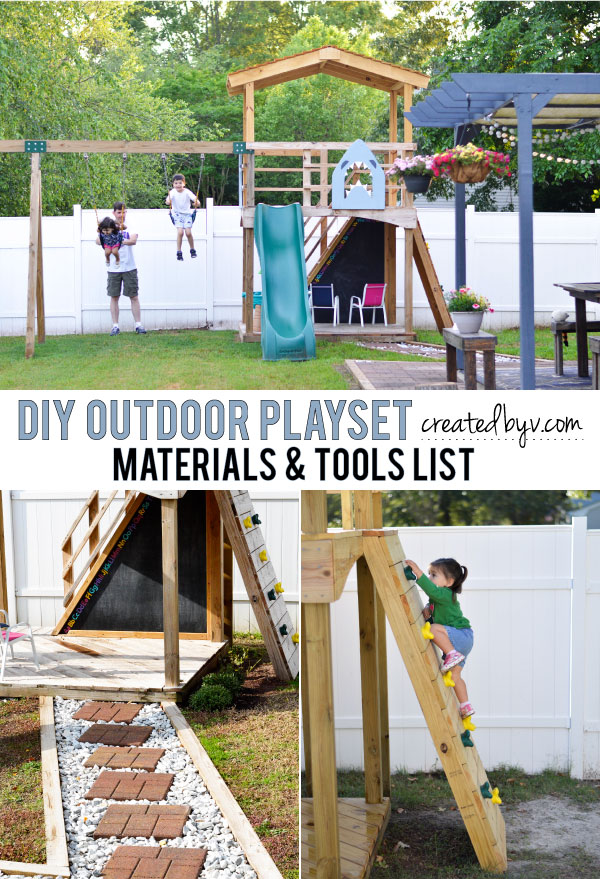
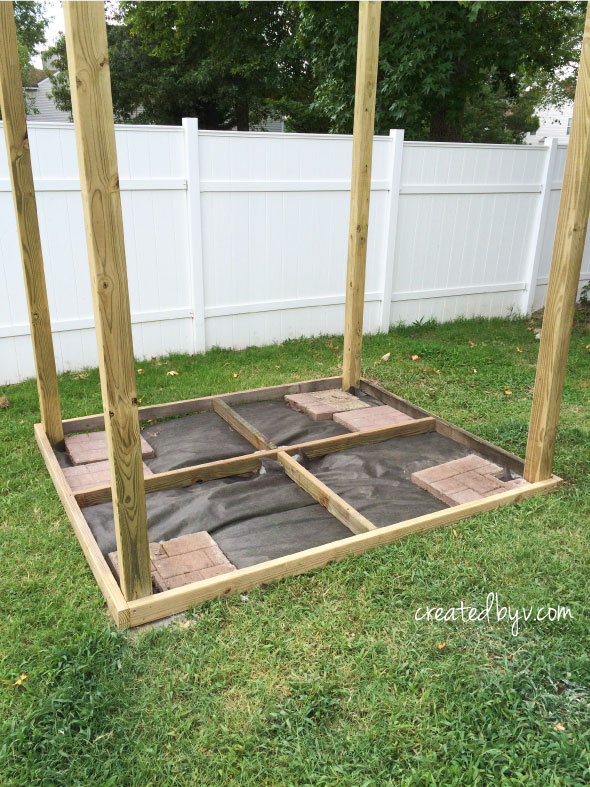
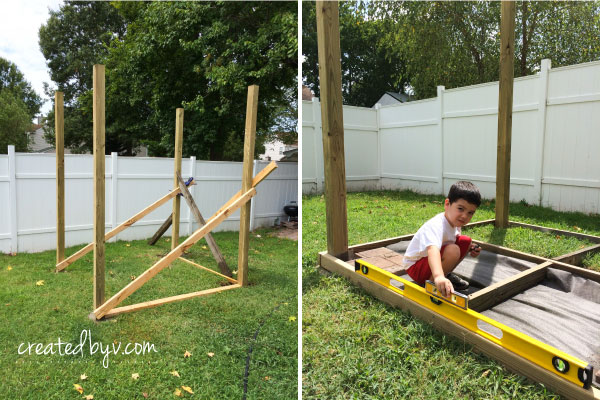
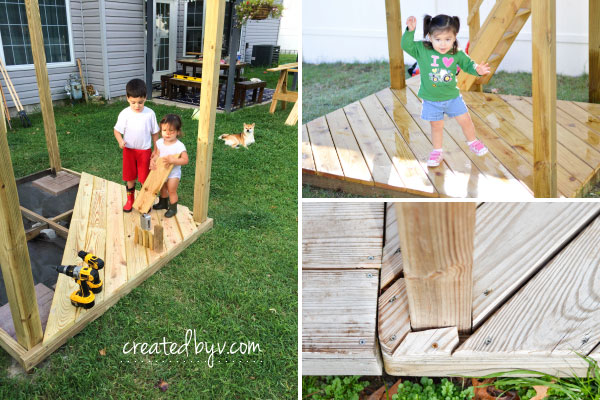
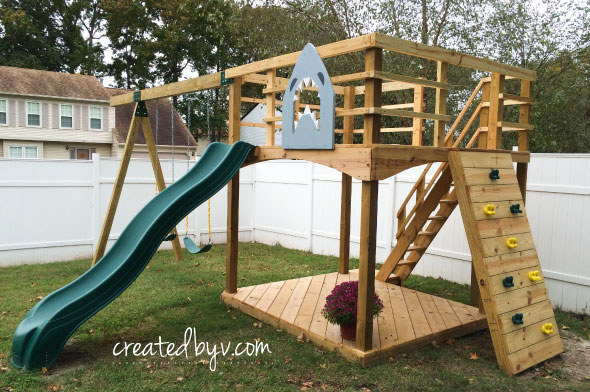
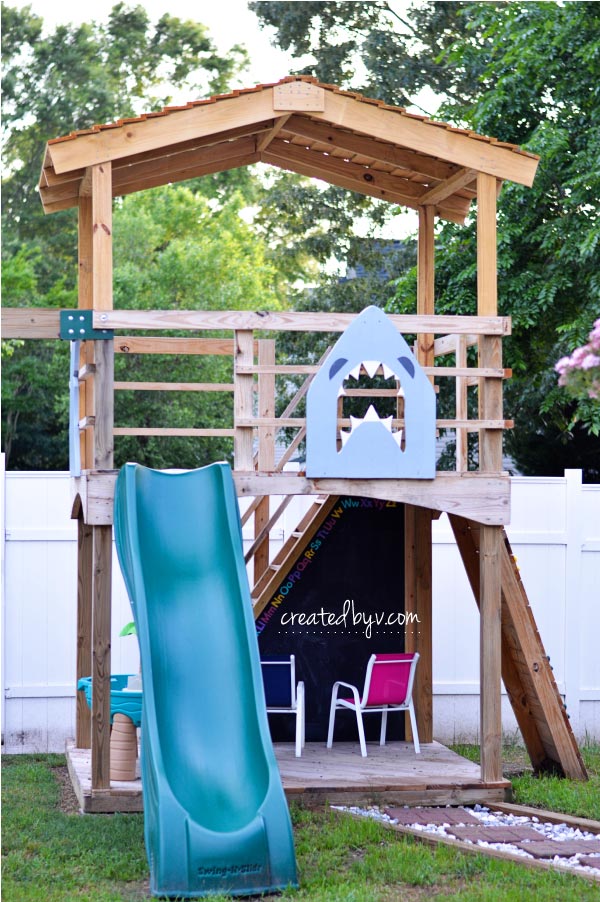
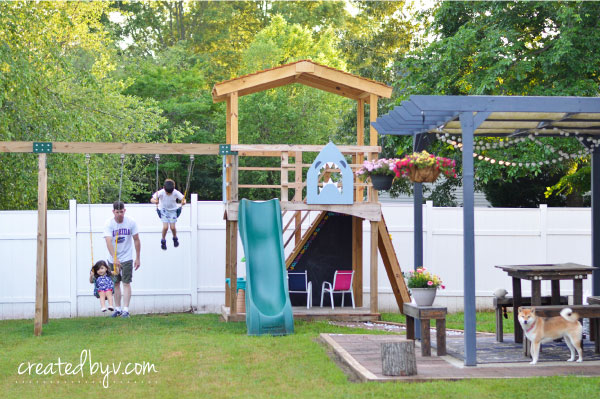
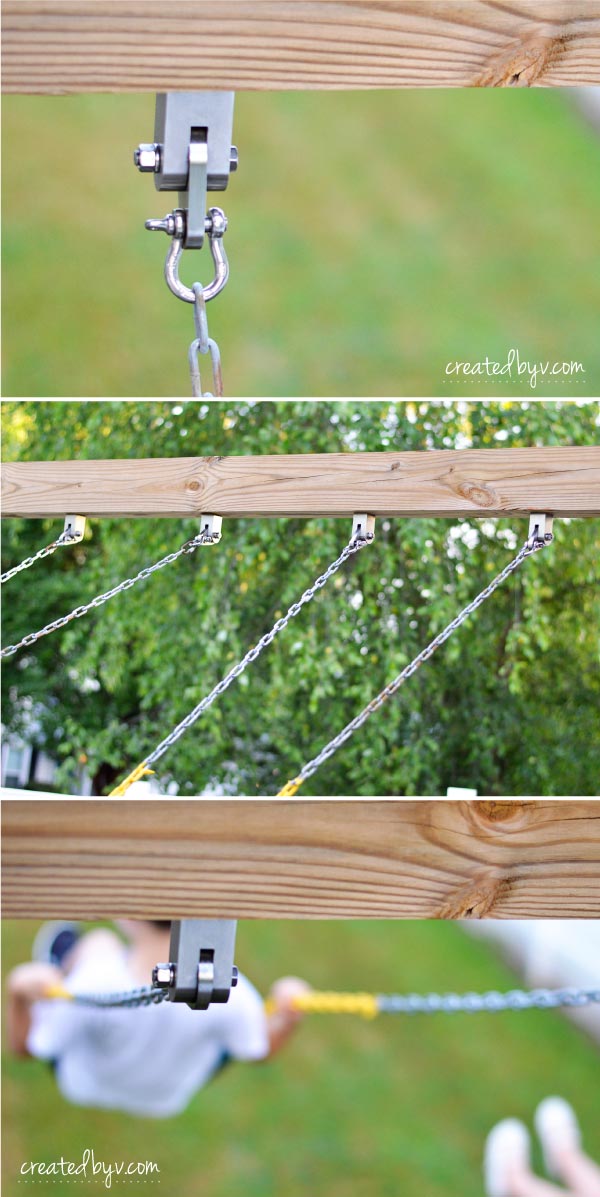


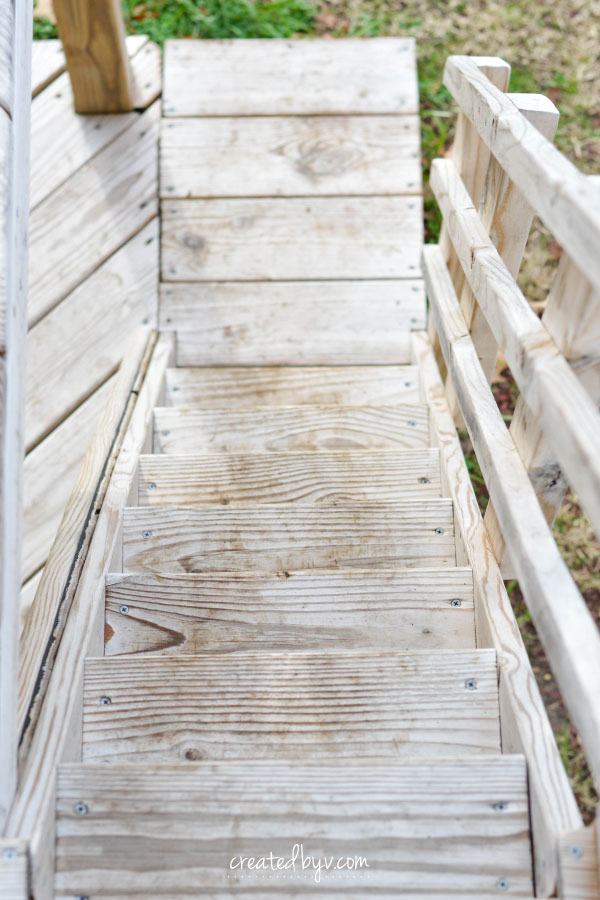
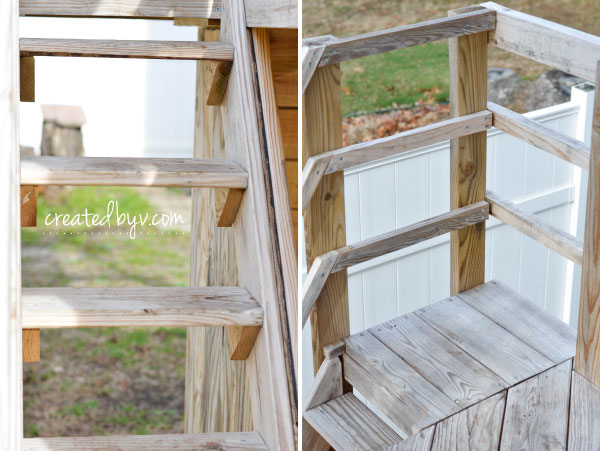
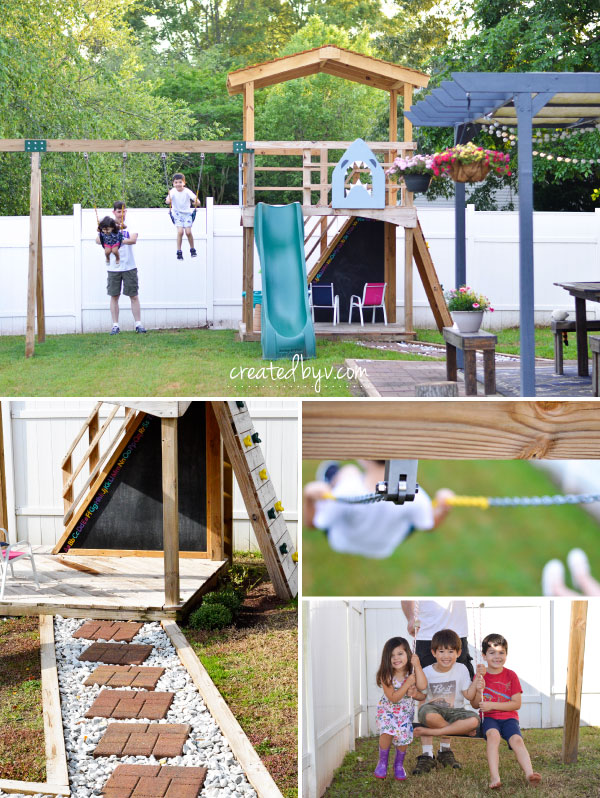
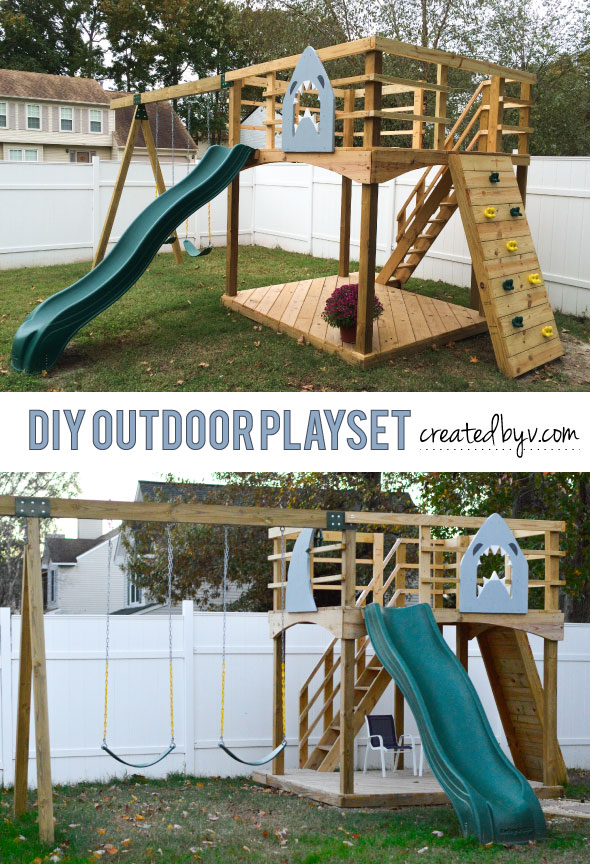


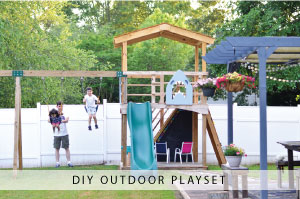
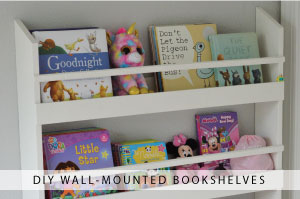

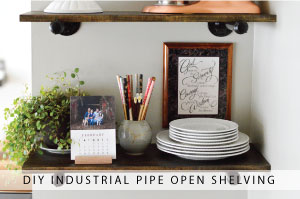
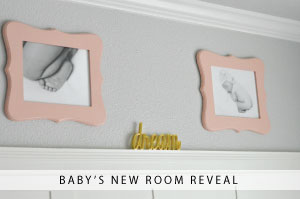

This is a great playset. I just built mine using your idea and was wondering if you also used 2x4s for the floor joist as a base for the top deck? After 5 years now, how are they holding up? Thanks!
This is amazing!!! Where did you get the shark?!
We made the shark face and fin — I drew them out on plywood, cut along the lines with a jigsaw and gave them a couple coats of paint. Glad you liked it, Casey!
Is there are purpose to the flooring for the base or is it just for looks?
The diagonal deck flooring is for looks — a little customization since we built it to our own specifications.
In Phase 1, your corner posts were only 8ft high. How did you extend the height to add a stable roof structure? And would you have done it differently if the roof was done all at the same time?
Love to see this post :)
Thanks, Michelle!
I love this playset, and I love that you listed out which materials you used! Step by step processes make my husband happy! Do you know which of the materials you used for the roof? We’re looking at making this without the roof initially, so I’m wondering what materials we need without doing the roof?
Thanks so much, Charissa! We started without a roof, too, so you can omit the fence pickets all together and decrease the number of 2x4s. Those are the materials we used to build the roof. Feel free to contact me with any questions along the way. Happy building, Charissa!
So how many 2×4’s did you use for the roof, so I know how many to buy?
Thank you!
We are trying to find the rectangle bracket that attaches the swing set to the deck pole. We cannot find it anywhere and I don’t see it in your list of materials. Where did you get that bracket from?
The two metal brackets on our set were custom made by my husband. We tried to find a similar product for the materials list, but could only find the A-frame one. The bracket that attaches the swings to a structure is included in a complete hardware set, however I was unable to find a similar product sold separately. That said, you may have success finding something at your local hardware stores as a solution. Good luck, Jason, and thank you for reading!
Thanks for the quick response! We are going to use two rectangle bracket straps and a bottom L bracket to attach the swings set part to the deck. Thanks for posting, this is a real nice plan!
Thanks for sharing your plan, Jason, as it may be helpful to others. Happy building! :)
I’m super glad you posted the materials and directions. I found your initial post on Pinterest and will be using your play set as a guide to build one this Summer. I’m thinking of running my floor boards straight instead of angled to save on cost, and I’m going to add an angled ladder next to the climbing wall instead of the stairs on the back. Is there a reason you went with angled floor boards?
This is one of the best looking custom play sets I’ve seen. Thanks again for posting!
Thanks so much, Josh! A ladder is a great alternative to stairs; we built stairs only because our youngest was still wobbly while climbing. We also went with angled deck boards simply for aesthetic. Isn’t that some of the joy of DIY? You can customize your set to your own liking and budget! Good luck on your building, Josh, and I hope you’ll share pictures of your set with us! — v.
Do you have an idea on about how much this cost you to build?
In all, it cost about $800. The first stage ran around $650 for all the pressure-treated wood, hardware, concrete, weed barrier and accessories — the slide, swings, rocks and wheel. The upgrade cost another $150 since we had a lot of the materials already on-hand. Thanks for reading, Justine!